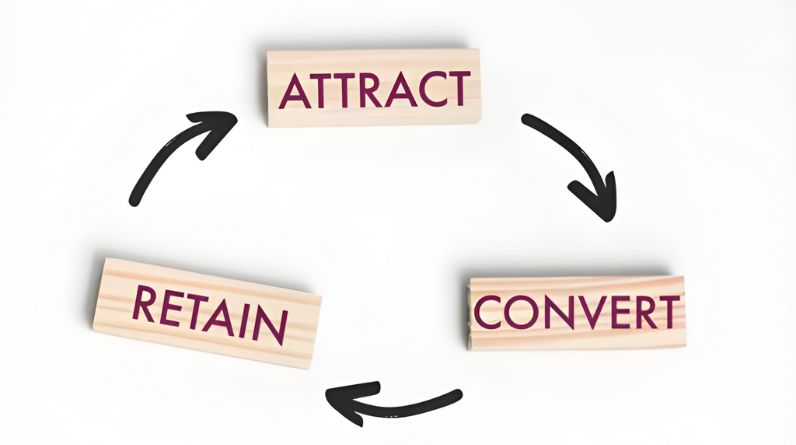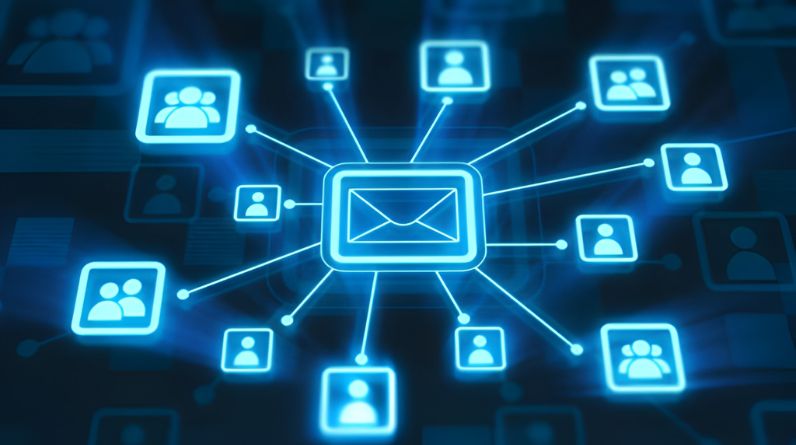Your email list is sitting idle. Thousands of subscribers. But conversions? They’re not moving the needle. If this describes your situation, you’re not alone. Most businesses struggle with a fundamental problem: they have subscribers but struggle to turn them into paying customers.
The disconnect isn’t about email itself. Email marketing consistently delivers ROI of $42 for every $1 spent. The problem is strategy. Many companies treat their email list as a broadcasting channel rather than a conversion vehicle. They blast promotions, wonder why engagement drops, and conclude email is “dead.” It’s not dead—it’s just being used wrong.
This guide reveals the psychology, strategies, and tactics that actually convert subscribers into customers. These aren’t generic tips; they’re battle-tested approaches grounded in behavioral science and real-world results.
Understanding the Subscriber-to-Customer Gap
Before jumping into tactics, understand why subscribers don’t immediately become customers. A subscriber has taken one action: they’ve given you their email address. That’s it. They haven’t committed to your brand, your values, or your solutions. They’ve simply said, “I’m willing to learn more.”
The conversion gap exists because most businesses skip the “learning more” phase. They move directly to selling. This triggers what email professionals call “list burnout”—a condition where open rates plummet, unsubscribe rates spike, and the list becomes increasingly valuable.
Converting subscribers requires a different mindset: nurturing comes before asking. You must earn the right to sell by first proving value.
The Entry-Point Framework: Why Where They Came From Matters
Here’s a principle most email marketers overlook: subscribers enter your list through different doorways, and each entry point reveals their intent.
Someone who downloaded your free industry report has a different mindset than someone who saw your Instagram ad. The report reader is actively seeking knowledge; the Instagram visitor might simply be curious. Yet most businesses send both subscribers the exact same welcome email.
How to Leverage Entry Points for Conversion
Start tracking where subscribers originate:
- Blog posts: Indicates educational interest—send educational follow-ups
- Product pages: Indicates commercial intent—move toward sales faster
- Webinar registrations: Indicates confidence in your expertise—build on this authority
- Lead magnets: Indicates specific problem awareness—address that problem directly
- Ads: Indicates lower commitment—provide more value before selling
A manufacturing company called Manufacturing Millionaires demonstrates this perfectly. They offer a free “Innovation Risk Score” tool. The tool itself segments subscribers by risk level (red, yellow, green). Follow-up emails then reference the subscriber’s specific risk category, making each message feel personally tailored. Conversion rates are dramatically higher than their generic campaigns because subscribers receive relevant next steps based on their actual situation.
The Five-Step Conversion Strategy
Step 1: Welcome with Indoctrination, Not Bombardment
Your welcome email is the highest-stakes message you’ll send. New subscribers are most receptive within the first 24-48 hours. This is when they’re excited about what you promised and willing to engage.
Use this moment strategically through a 3-5 email welcome sequence called an “indoctrination campaign.” Include:
- Confirm their decision: “Here’s why you made the right choice joining us”
- Share your vision: How your brand helps them achieve their goals
- Protect deliverability: Ask them to whitelist your email
- Provide immediate value: Free content, discount, or exclusive access
- Set expectations: How often they’ll hear from you and what to expect
These emails arrive automatically when someone subscribes. Tag them so they don’t receive duplicate messages. The sequence feels personalized yet requires no manual work.
Step 2: Segment to Eliminate Irrelevance
The most powerful conversion lever isn’t more emails—it’s better targeting. Segmentation increases conversion rates because subscribers receive content aligned with their interests.
| Segmentation Type | Strategy | Conversion Impact |
|---|---|---|
| Behavioral | Track clicks, opens, purchases to identify engaged vs. inactive | 3x higher conversion |
| Demographic | Use location, company size, industry to match relevant offers | 2x higher conversion |
| Purchase History | Send replenishment emails, cross-sells, upsells | 53.6% click-to-open rates |
| Psychographic | Understand values, lifestyle, motivations—not just data | 5x+ higher conversion |
Notice the difference between demographic and psychographic. Demographics tell you who someone is; psychographics explain why they buy. A 35-year-old professional (demographic) might buy sustainability-focused products because they value environmental responsibility (psychographic). Email messaging changes dramatically when you know this distinction.
Step 3: Balance Value Provision with Sales Messaging
Here’s where most email programs fail: they tip too far toward selling or too far toward value.
Sending nothing but promotions burns out your list. But sending only value without ever asking for sales wastes a powerful asset. The solution? Strategic value stacking.
The 60/40 Framework: For every 10 emails you send, 6 should provide pure value (educational content, insights, tips, stories) and 4 can be promotional (offers, sales announcements, product launches).
Within promotional emails, value still matters. Don’t say “Buy now.” Say “Here’s how this solves your specific problem, and here’s why now is the right time.” The emphasis is still on their benefit, not your revenue.
Step 4: Craft Messages Around One Clear Goal
Email with multiple CTAs creates “choice paralysis.” Subscribers receive mixed signals and often do nothing.
Every single email must drive one measurable action: clicking a link, replying, redeeming an offer, or purchasing. If you need to recommend additional products, let those suggestions flow naturally from their purchase history, not random add-ons.
Example: A replenishment email reminds a customer of their last purchase, includes a pre-filled cart for one-click reordering, then suggests a complementary product. The main goal is reordering; the secondary suggestion enhances without overwhelming.
Step 5: Ask Deep Dive Questions to Understand Motivation
Most businesses guess at what subscribers want. Smart businesses ask. And they ask the right way.
Use the “Deep Dive Question” methodology: ask subscribers about their biggest challenge in a specific area. The key is precision—not too broad, not too specific.
Weak questions:
- “What’s your biggest business challenge?” (too broad)
- “What’s your challenge with WordPress plugin compatibility?” (too specific)
Strong questions:
- “What’s your biggest challenge with lead generation in 2025?”
- “When building your product roadmap, where do you get stuck?”
Collect these responses, identify themes, and use them to create targeted campaigns. You’re no longer guessing; you’re responding to actual market feedback.
Advanced Tactics That Drive Real Conversions

Replenishment Emails: The Highest-Converting Category
Replenishment emails enjoy 53.6% click-to-open rates—the highest in email marketing. These emails remind customers to reorder consumable items they’ve purchased before.
Send replenishment emails at these key moments:
- One week before typical reorder cycle
- One day before
- On the day of last purchase (year anniversary)
Include a pre-populated cart link so they can reorder with one click. Pair this with “Email Only” pricing to create exclusivity.
Abandoned Cart Recovery: Reclaiming Lost Revenue
Approximately 70% of shopping carts are abandoned. A strategic email sequence recovers 15-30% of this lost revenue. Send three emails:
- Within 1 hour: “You left something behind” reminder
- Within 24 hours: Add scarcity (“Only 3 left in stock”)
- Within 48-72 hours: Offer an incentive (“10% off if you complete today”)
Re-engagement Campaigns: Winning Back Inactive Subscribers
Inactive subscribers are dead weight. They lower your sender reputation and waste list space. Use a strategic win-back campaign before removing them permanently.
Send them: “We miss you. Here’s something special just for you.” Offer exclusive content or a compelling discount. This works surprisingly well for lapsed customers.
Personalized Product Recommendations: Cross-Selling Intelligence
Generic “Best Sellers” recommendations underperform. Smart recommendations track each subscriber’s browsing history, purchase pattern, and engagement level, then suggest items they’re likely to want.
Frame recommendations as “We found you an upgraded version of what you browsed” rather than random product suggestions. This positions you as a personal shopper, not just a seller.
Technical Optimization: Where Conversions Break Down
Mobile Optimization Is Non-Negotiable
46% of all email opens occur on mobile. In some industries, mobile opens exceed desktop by 3x. Yet many brands still design for desktop first.
Mobile-optimized emails use:
- Single-column layouts (no multi-column designs)
- Ultra-concise copy (headlines under 7 words when possible)
- Large, thumb-friendly CTAs
- Clear alt text for images (in case images don’t load)
Subject Lines: Your First (and Only) Chance
Subject lines determine open rates. Open rates determine everything else. A compelling subject line should be:
- Curiosity-driven: “The one thing we’re doing differently in 2025”
- Benefit-focused: “Save 3 hours every week with this simple tweak”
- Personalized: Include subscriber’s first name or reference their behavior
- Avoided: Spam words (Free, Urgent, Click here, Guarantee, Winner)
Gmail and Yahoo now require spam rates below 0.3%. Using flagged spam words increases your risk of landing in spam folders, killing conversions before they start.
Measuring Success: The Metrics That Matter
Not all email metrics are created equal. Focus on metrics that indicate conversion potential:
| Metric | What It Means | Target |
|---|---|---|
| Open Rate | Percentage of emails opened | 20-30% (industry varies) |
| Click-Through Rate | Percentage clicking links | 2-5% |
| Conversion Rate | Percentage completing purchase | 1-5% (depends on segment) |
| Revenue Per Email | Average revenue generated per send | Compare week-over-week |
| Customer Lifetime Value | Total value subscriber generates over time | Target increase of 10-20% annually |
Improving from 2% to 3% conversion represents a 50% increase in sales. Small improvements in conversion rate compound dramatically over time.
Common Mistakes That Kill Conversions
Over-promotion without value: Sending only sales emails burns subscribers out. Mix value with sales.
Ignoring entry points: Treating all subscribers identically ignores that they joined for different reasons. Segment by entry point.
Poor mobile experience: Testing your emails on desktop only. Half your subscribers won’t see them properly.
Unclear CTAs: Subscribers should know exactly what action you want in under 3 seconds. Make CTAs obvious.
Inconsistent sending schedule: Irregular emails feel spammy. Establish a predictable schedule subscribers expect.
Your Path Forward: The First Steps
Converting subscribers into customers is not about perfection. It’s about improvement. Start by identifying your current baseline: What percentage of subscribers are becoming customers? What’s your revenue per email?
Then implement these strategies in order of impact:
- Fix your welcome sequence (highest-impact, quick win)
- Implement basic segmentation by entry point
- Add replenishment and abandoned cart emails
- Test subject lines and mobile optimization
- Survey subscribers with Deep Dive Questions
- Build advanced personalization and dynamic content
Email marketing remains one of the most profitable channels available. The businesses winning aren’t those with the biggest lists—they’re the ones who’ve mastered the psychology of conversion and built systems that genuinely serve their subscribers while driving revenue.
Your email list is a goldmine. But only if you treat subscribers as humans deserving value, not as targets for relentless promotion.


